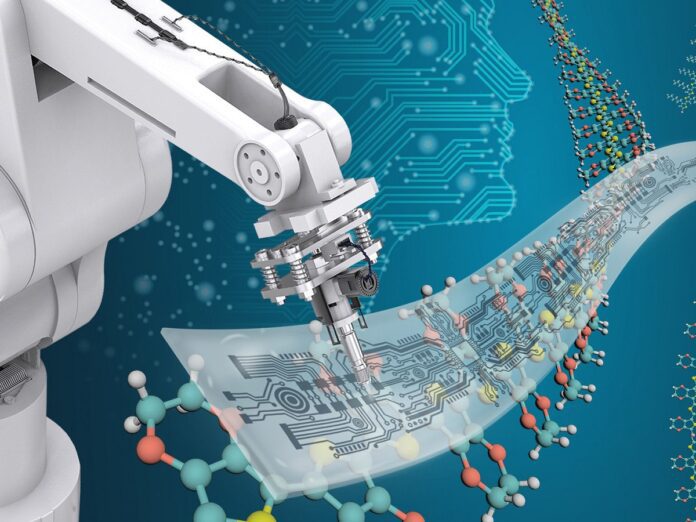In the bustling quarters of Lawrence Berkeley National Lab and UC Berkeley, an innovative fusion of technology and scientific endeavor takes center stage. Within the A-Lab facility, robotic line cooks, under the guidance of materials scientist Gerbrand Ceder, embark on a pioneering journey aimed at revolutionizing materials science. The vivid interplay between artificial intelligence (AI) and robotics marks a paradigm shift in the exploration and synthesis of novel materials, especially those envisioned for future battery designs.
A Robotic Symphony in the A-Lab
In the heart of the A-Lab, articulated robotic arms intricately handle and manipulate ingredients like nickel oxide and lithium carbonate. Each arm has its unique task – from ingredient selection and mixing to oven operation and plating. The room hums with activity as the robots toil ceaselessly under the watchful eyes of Ceder and his team, demonstrating an impressive ability to work through the night tirelessly.
Unpredictable Experiments and Iterative Learning
The facility’s primary objective is to create new and intriguing materials, often with unpredictable outcomes. The robots, akin to diligent apprentices, follow meticulously devised recipes. These experiments sometimes yield successful outcomes—a beautiful powder—but equally often, they result in meltdowns or evaporate into nothingness. Yet, the beauty lies in the robots’ ability to learn and adapt. They meticulously analyze their creations, adjust the recipes, and persistently attempt new iterations.
AI: Expanding the Horizon of Possibilities
Recent advancements have broadened the scope of materials accessible to Ceder’s robots. An AI program, GNoME, developed by Google DeepMind, has significantly expanded the catalog of potential materials. Trained using data from the Materials Project, GNoME has conceptualized designs for an astonishing 2.2 million new crystals, elevating the repertoire of stable materials nearly tenfold. The promise lies in the potential discovery of the next solid-state electrolyte, revolutionary solar cell materials, or high-temperature superconductors within this expanded database.
The Quest for Stability and Novelty
The crux of material synthesis, whether by human hands or robotic arms, revolves around stability. Identifying stable materials is a pivotal step, ensuring their viability for practical applications. Traditionally, humans have expanded the roster of stable materials through observation, chemical intuition, and accidental discoveries. However, AI endeavors to surpass biases and limitations inherent in human knowledge, seeking to explore the uncharted territories of novel materials.
Active Learning and Autonomous Experimentation
GNoME relies on an active learning approach, harnessing a graph neural network to comprehend the intricate patterns in stable structures. Leveraging this understanding, the AI generates numerous potential candidates and refines them using density-functional theory (DFT). This iterative process leads to the creation of more complex structures, often involving multiple unique elements, previously inaccessible to human intuition.
Bridging the Gap: From AI Predictions to Lab Experiments
The pivotal phase of material synthesis lies in the delicate dance between AI predictions and real-world lab experiments—a process that not only tests the accuracy of artificial intelligence but also pushes the boundaries of what can be practically achieved in a laboratory setting.
The AI’s Prologue: GNoME’s Predictive Prowess
GNoME, the brainchild of Google DeepMind, emerges as a revolutionary force in materials science. Trained on a vast dataset from the Materials Project, it employs a graph neural network (GNN) to discern intricate patterns within stable structures. Armed with this knowledge, GNoME generates a staggering 2.2 million crystal designs, envisioning a myriad of possibilities that extend far beyond the confines of human intuition.
The Transition to Reality: Active Learning in Action
The transition from theoretical predictions to tangible materials involves an active learning approach. The GNN, having produced potential candidates, hands over the reins to density-functional theory (DFT). This quantum mechanics technique serves as the refining lens, scrutinizing the predicted structures and adjusting them to align with the empirical realities of stability.
The Proving Ground: A-Lab’s Robotic Symphony
With refined predictions in hand, the stage shifts to the A-Lab, where robotic line cooks, under the astute supervision of Gerbrand Ceder and his team, take charge. The autonomous lab becomes the proving ground where theoretical conjectures meet the crucible of reality. The robotic arms, versed in their tasks, initiate the synthesis of materials according to the AI-generated recipes.
Trials and Iterations: A-Lab’s Nightly Pursuit
As the experiments unfold, the robots venture into uncharted territories, attempting to materialize the envisioned crystals. The initial outcomes are often far from perfect—a melted mess, an evaporated concoction, or a pristine powder. However, this is merely the prologue to an intricate narrative of trials and iterations. The robots, undeterred by setbacks, meticulously analyze each result, adjusting the recipes with a determination akin to human intuition.
The Epilogue: Unleashing the Potential
In the grand narrative of AI-guided material synthesis, the bridge from predictions to experiments becomes a crucial chapter. It signifies not just a scientific endeavor but a journey into unexplored realms, where AI and robotics harmonize to unlock the full potential of novel materials. As we traverse this bridge, the confluence of technology and human ingenuity promises a future where materials are not just discovered but crafted with precision, expanding the horizons of what is achievable in the realm of materials science.
Challenges on the Horizon
Despite the exponential growth in potential materials, the transition from theory to practicality remains arduous. Many synthesized materials pose practical limitations—some contain radioactive elements or demand extreme conditions for synthesis. The bottleneck in material synthesis and testing persists, hindering the realization of the full potential of these newfound materials.
The Ethical and Commercial Considerations
The release of GNoME’s generated data, albeit promising, comes with ethical and commercial implications. While the expanded database presents a treasure trove for academic exploration, Google DeepMind’s restrictions on commercial use raise questions about future collaborations and practical applications of these materials.
Future Prospects and Expanding Frontiers
Despite these challenges, the collaborative synergy between AI, robotics, and materials science propels us toward uncharted territories. The expanded material database serves as a springboard for future AI programs and offers a pathway to discover unconventional compounds. As AI and robotics continue to evolve, their combined efforts promise to accelerate the discovery and synthesis of groundbreaking materials, transcending human biases and limitations.
The confluence of AI-guided predictions and robotic experimentation heralds a new era in materials science—a realm brimming with possibilities, waiting to unlock novel materials that may shape the future of technology and innovation.










